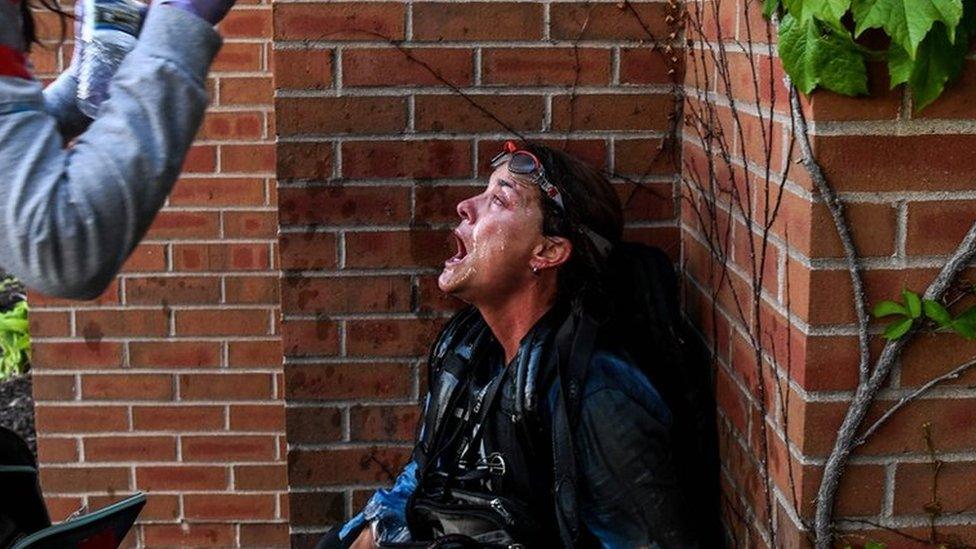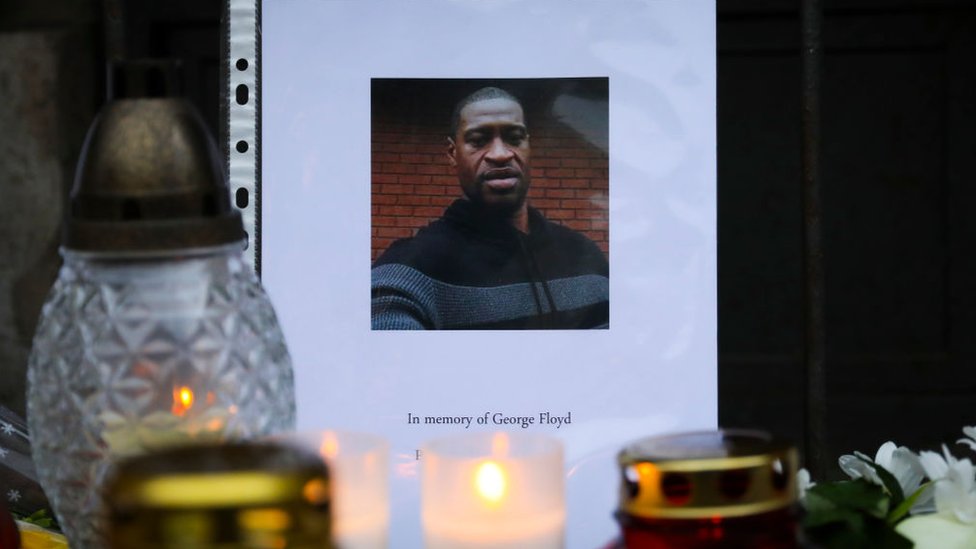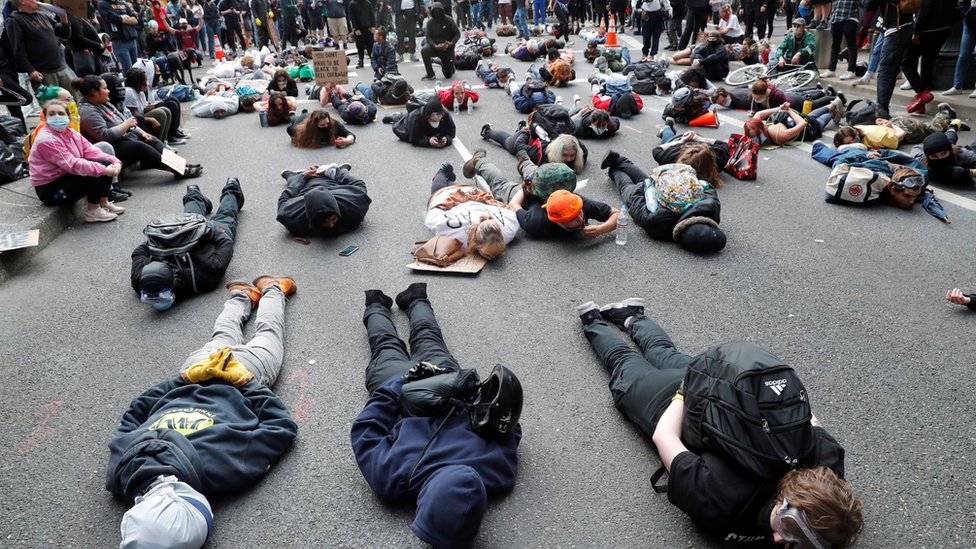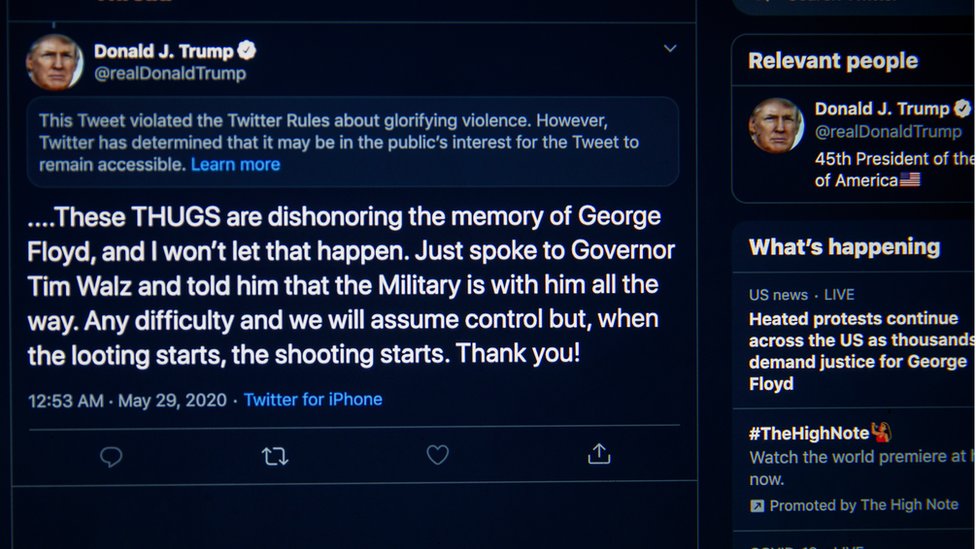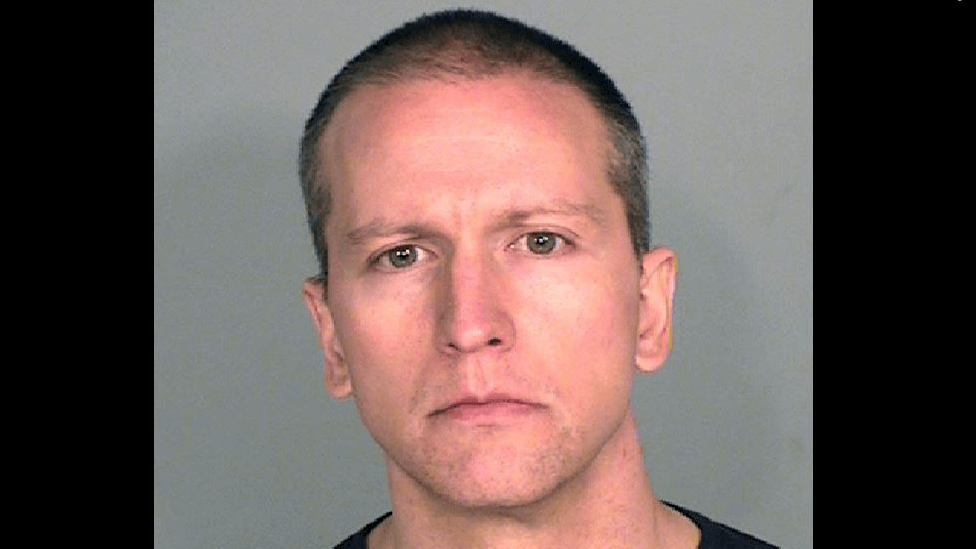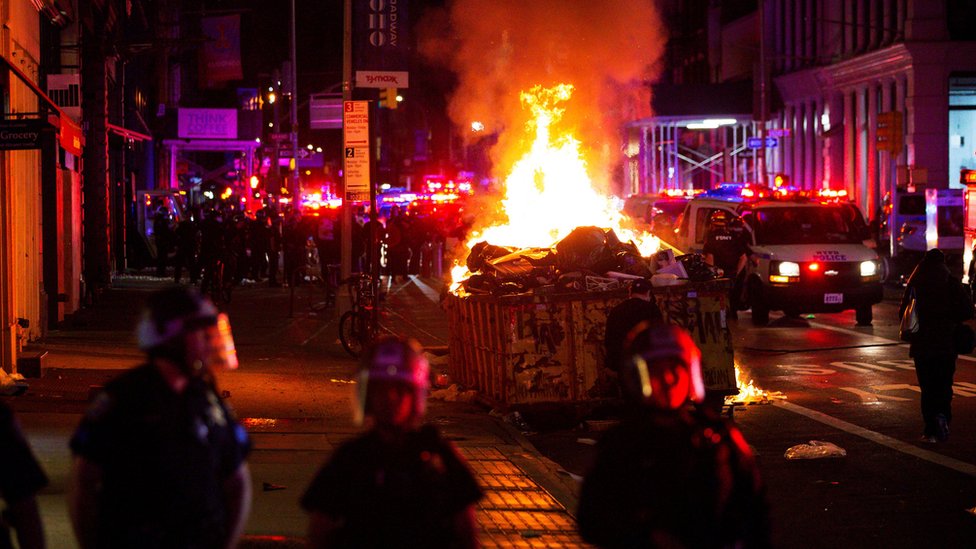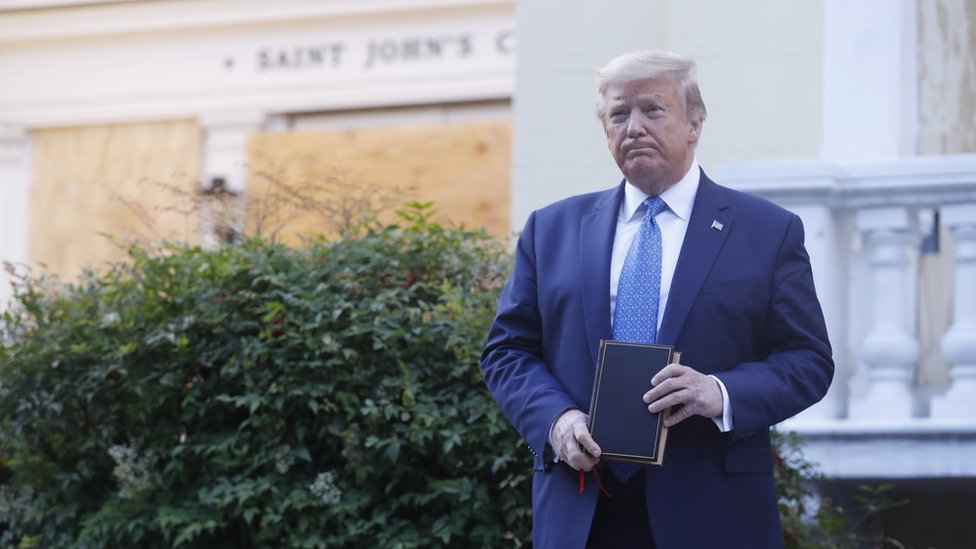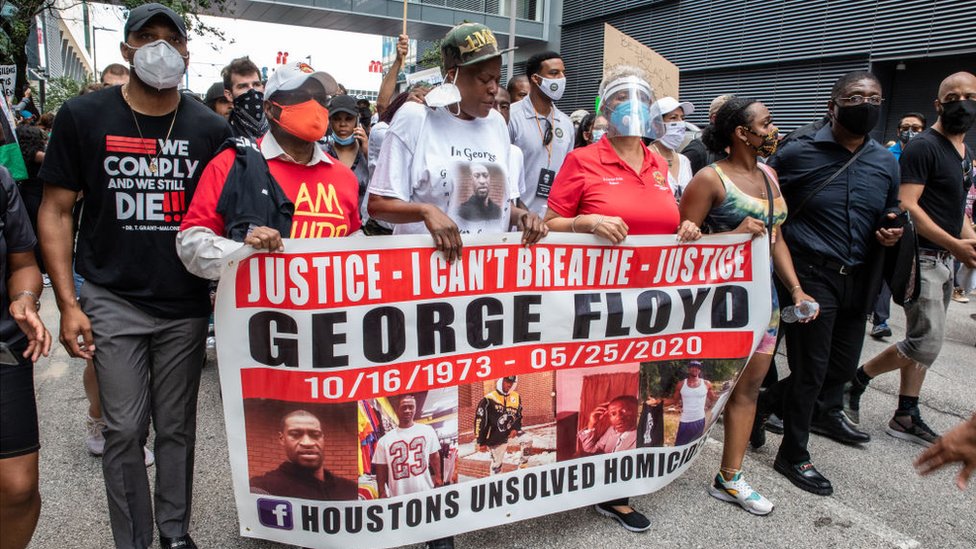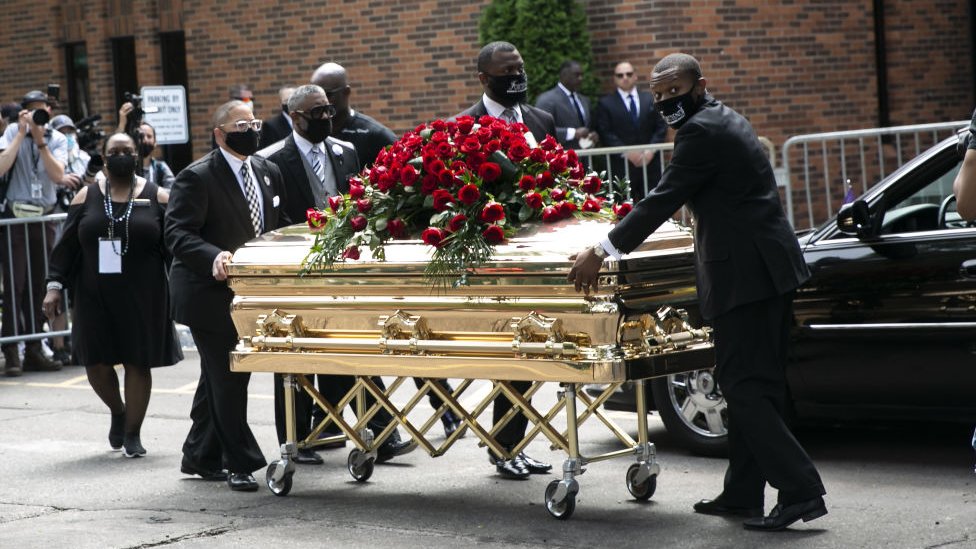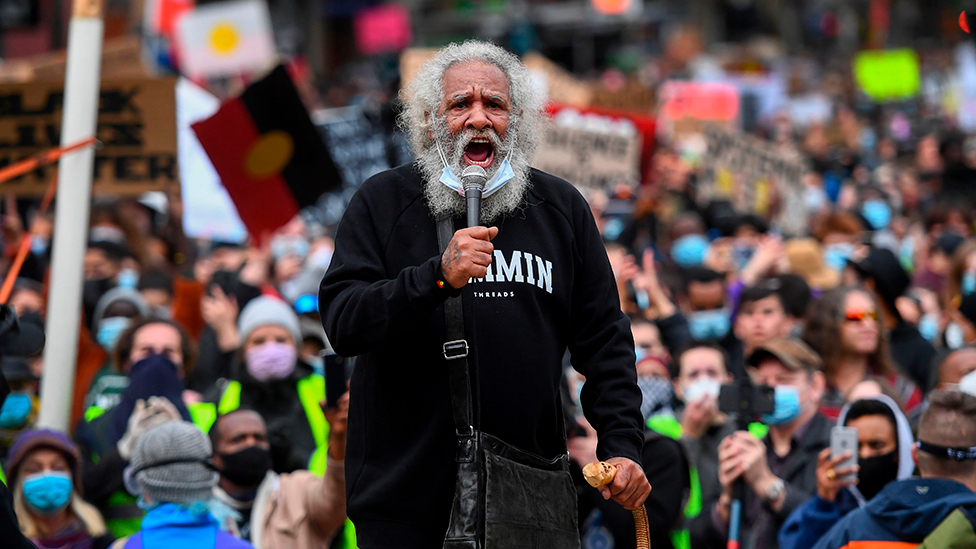George Floyd death: Trump denies protests forced him into bunker
- Published
'I'm tired of being afraid': Why Americans are protesting
US President Donald Trump has denied reports he was rushed to the White House bunker on Friday night during anti-racism protests.
Mr Trump told Fox News radio he went down during the day for a "tiny period of time" for an "inspection".
There have been protests near the White House, and across the US, for days over the death in custody of George Floyd.
Although some have turned violent, the defence secretary has said he does not back deploying "active duty forces".
White House compares Trump to Churchill in WW2
Mark Esper said on Wednesday he did not support invoking the Insurrection Act, which would enable the deployment of federal troops for domestic law enforcement.
"The option to use active duty forces should only be used as a matter of last resort and only in the most urgent and dire of situations. We are not in one of those situations now," he said.
This marks a break with President Trump, who has threatened to use the 1807 act and call up troops to quash demonstrations.
During a White House briefing on Wednesday, Press Secretary Kayleigh McEnany said for now, Mr Esper is still in his role.
Activist explains plea for peaceful protests
"As of right now, Secretary Esper is still Secretary Esper and should the president lose faith we will all learn about that in the future," she said.
The death of African-American George Floyd, whose neck was pinned down by the knee of a white policeman in Minneapolis, sparked widespread protests.
Tens of thousands of people have demonstrated across the United States for eight days against racism and the police killings of black Americans, while also calling for an end to racism and discrimination.
The vast majority have been peaceful but some have turned violent and curfews have been imposed in a number of cities.
What has Mr Trump said?
He was speaking on radio to Fox's Brian Kilmeade, as well as posting a number of new tweets amid continued criticism of his response to the unrest.
A report in the New York Times quoted a source as saying Mr Trump was taken into the bunker on Friday night with bodyguards.
"It was a false report," Mr Trump said, adding: "I was there for a tiny, little short period of time. And it was much for an inspection... maybe sometime you're going to need it."
Aleem Maqbool reports from peaceful protest in Washington's Lafayette Park
On Monday, Mr Trump came in for criticism after police dispersed mostly peaceful protesters to clear a way for him to stand outside the nearby St John's Church clutching a Bible.
Mr Trump denied telling police to disperse protesters.
"I didn't say, oh move them out, I didn't know who was there," he said, adding that "most religious leaders loved" his visit to the church.
The presiding bishop of the the Episcopal Church, Michael Curry, accused Mr Trump of using the church for "partisan political purposes", while the Archbishop of Washington Wilton D Gregory said the president had "manipulated" the shrine.
When asked about law enforcement during the protests, Mr Trump admitted "you have to get better than what they've been doing... we have to get the police departments, everybody has to do better", without giving any details on new policy.
In his tweets, Mr Trump, defended his record on race relations saying his presidency had done more for black Americans than presidential rival Joe Biden had done "in 43 years".
Mr Biden has said Mr Trump's actions are trying to "serving the passions of his base" and has pledged not to "traffic in fear and division".
George Floyd's ex partner: 'Gianna doesn't have a father'

George Floyd death
CRIME AND JUSTICE: How are African-Americans treated?
GEORGE FLOYD: An athlete, friend and father
NEWS REPORTERS: A new target for police?
DECEPTIVE FOOTAGE: Conspiracy theories spread online
HOW IT HAPPENED: The last moments of his life

What's the latest on protests?
Tuesday evening saw tens of thousands of mainly peaceful protests in the US, with levels of violence markedly down, although some demonstrators continued to defy curfews.
One of the biggest protests, joined by Floyd's relatives, took place in his hometown of Houston, Texas.
On Wednesday there was international support for Floyd's family, with marches taking place in Ireland, New Zealand, the UK, Australia and elsewhere.
Thousands chanted "no justice, no peace, no racist police" and "black lives matter" in central London.
Some 20,000 in Paris remembered the death of black man, Adama Traore, in French police custody in 2016.
Police asked several thousand protesters in the Dutch city of Rotterdam to go home as they were breaking coronavirus safe-distancing rules.


What's the background?
The US protests began after a video showed Mr Floyd being arrested on 25 May in Minneapolis and a white police officer continuing to kneel on his neck for several minutes even after he pleaded that he could not breathe.
The officer, Derek Chauvin, has been charged with third-degree murder and will appear in court next week. Three other police officers have been fired but not yet charged.
CNN reports that the state attorney-general will on Wednesday make a "significant announcement" on possible additional charges.
The peaceful protests honouring George Floyd
The Floyd case follows the high-profile cases of Michael Brown in Ferguson, Missouri; Eric Garner in New York; and others that have driven the Black Lives Matter movement in recent years.
For many, the outrage over Mr Floyd's death also reflects years of frustration over socio-economic inequality and discrimination.
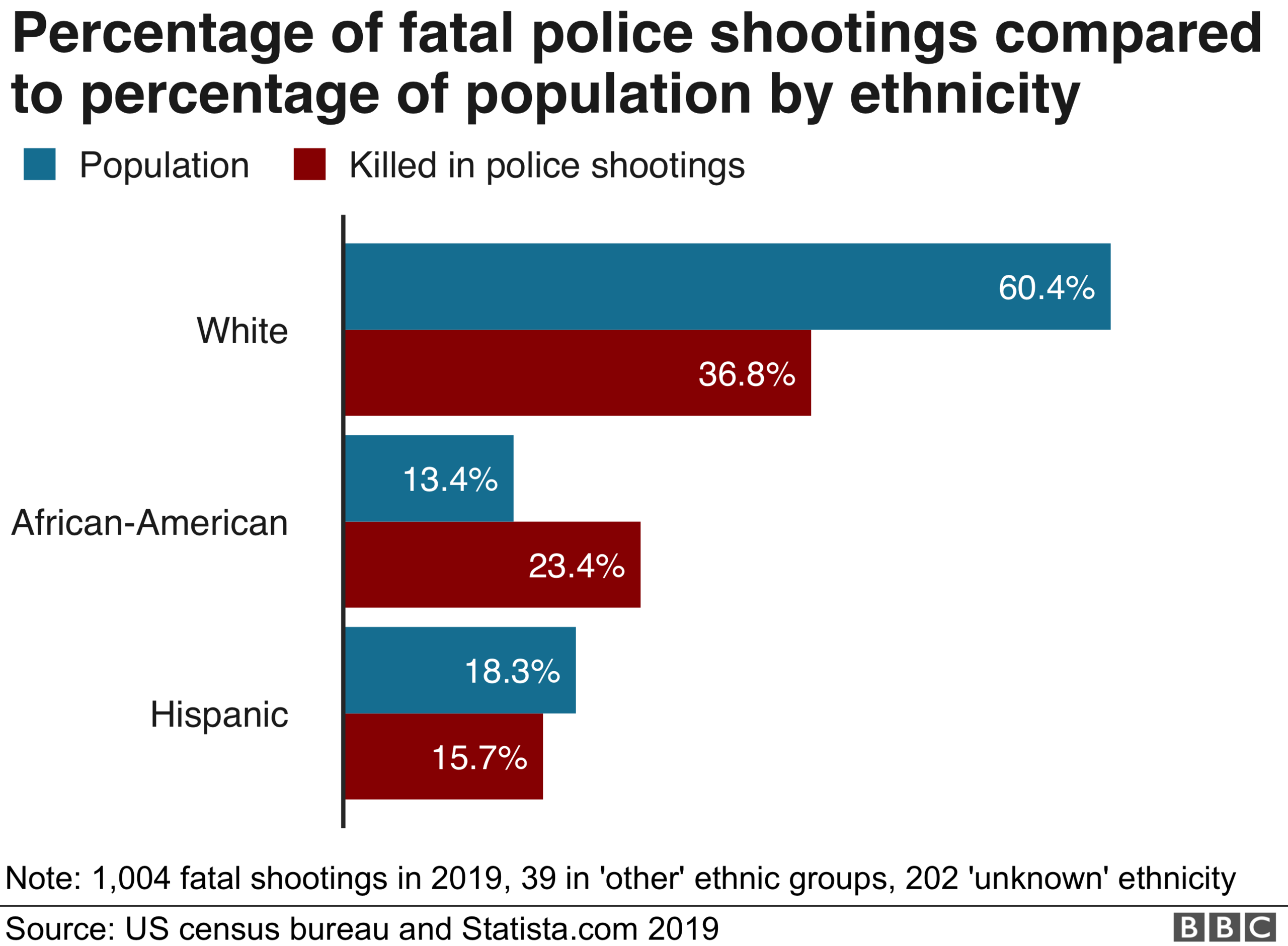

How has the unrest affected you? Share your experiences by emailing haveyoursay@bbc.co.uk, external.
Please include a contact number if you are willing to speak to a BBC journalist.
WhatsApp: +44 7756 165803
Tweet: @BBC_HaveYourSay, external
Send pictures/video to yourpics@bbc.co.uk, external
Please read our terms & conditions and privacy policy
- Published2 June 2020
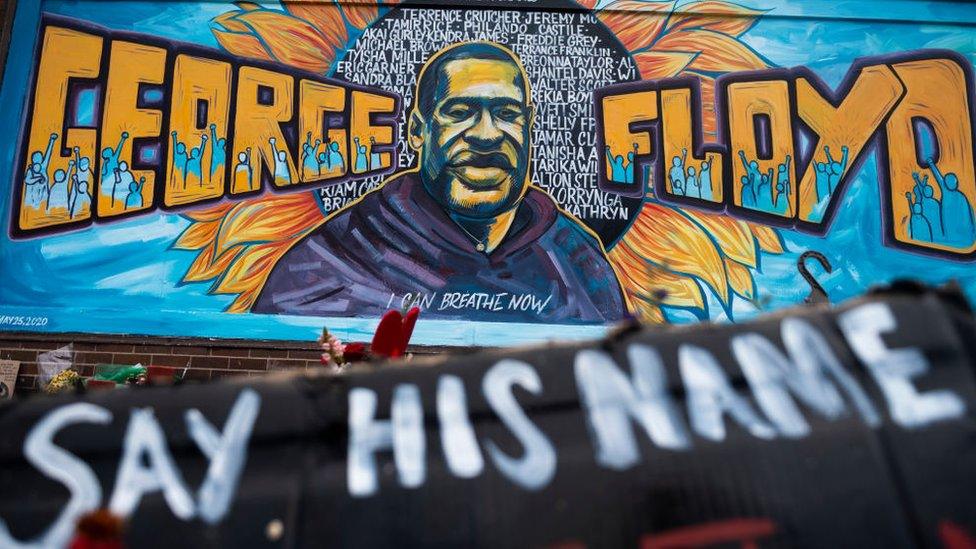
- Published1 June 2020
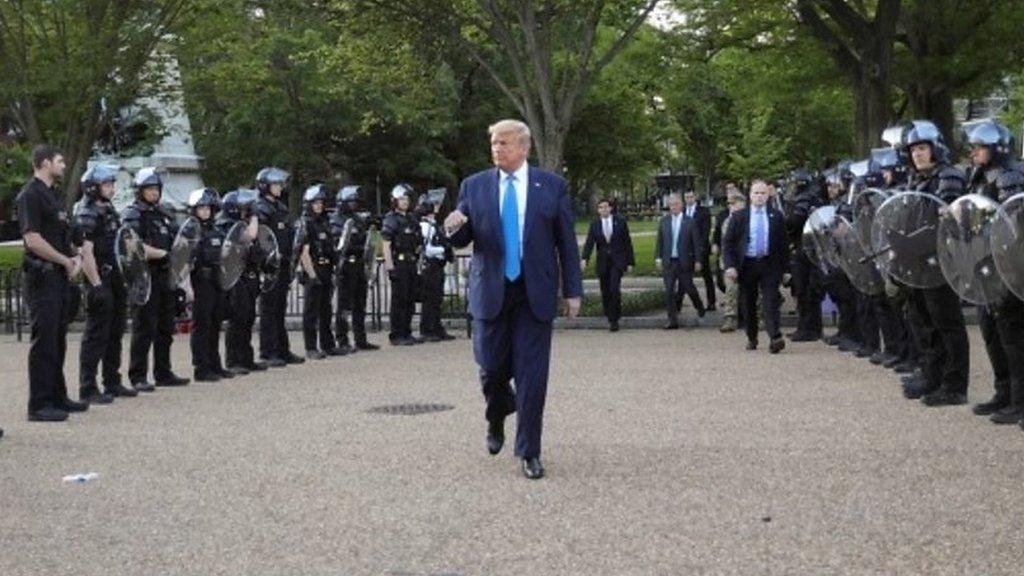
- Published1 June 2020
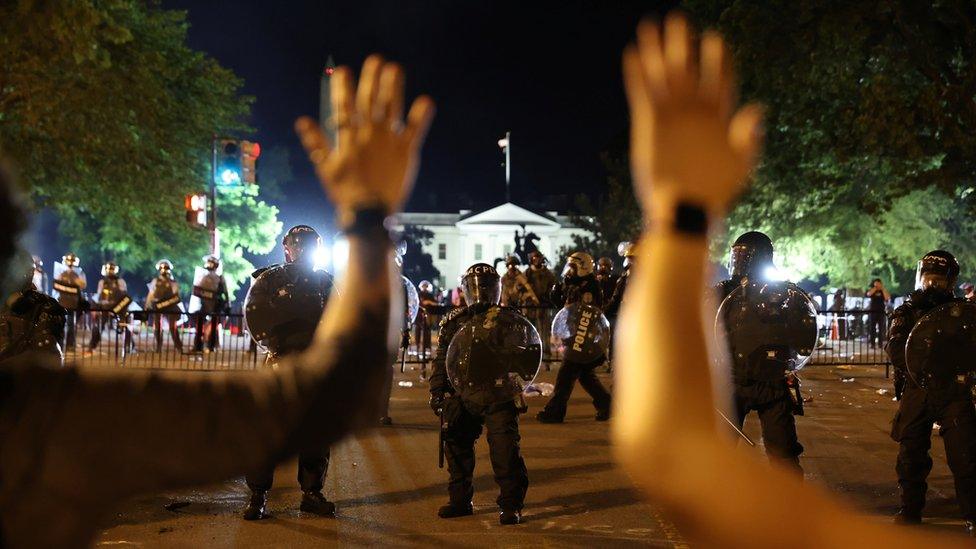
- Published2 June 2020
